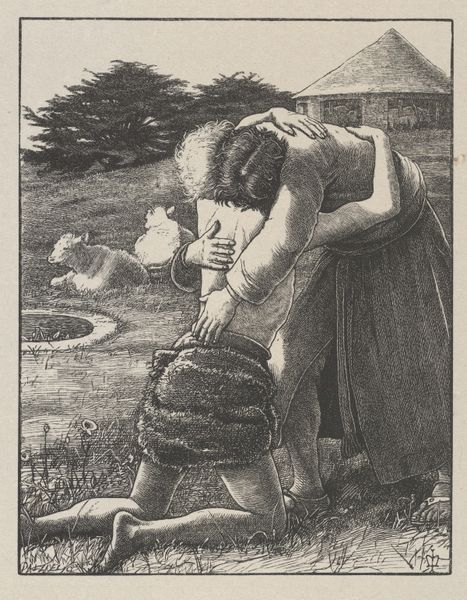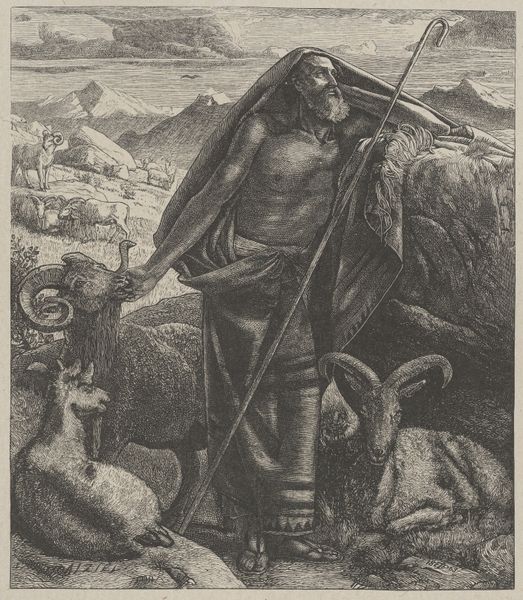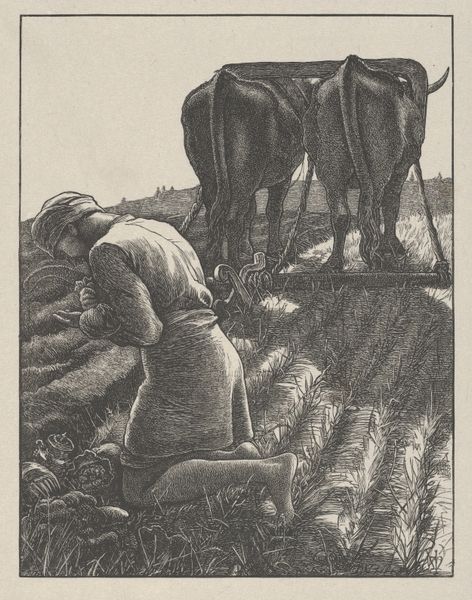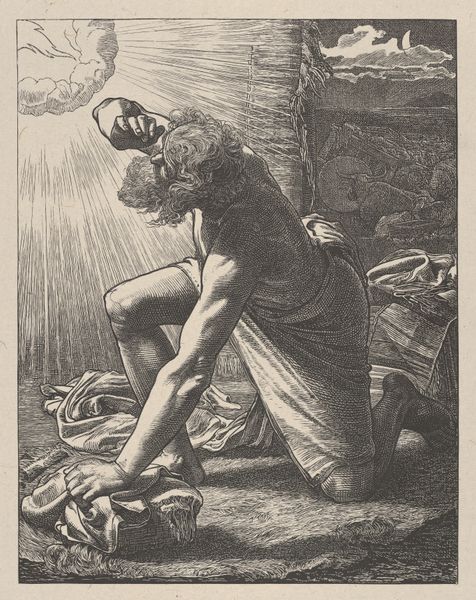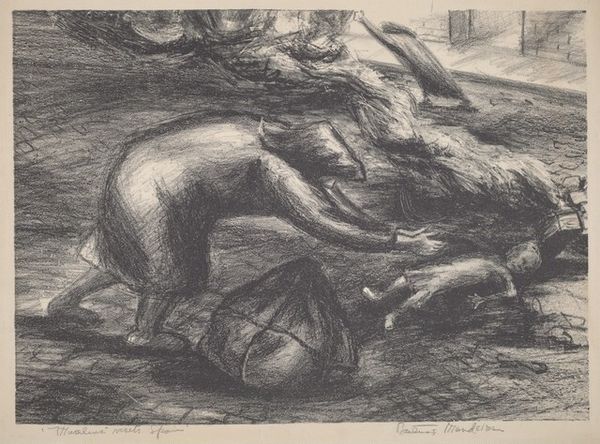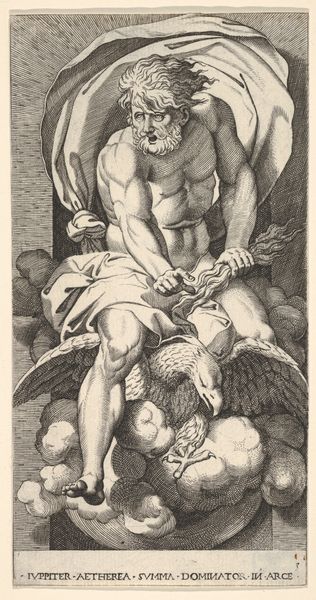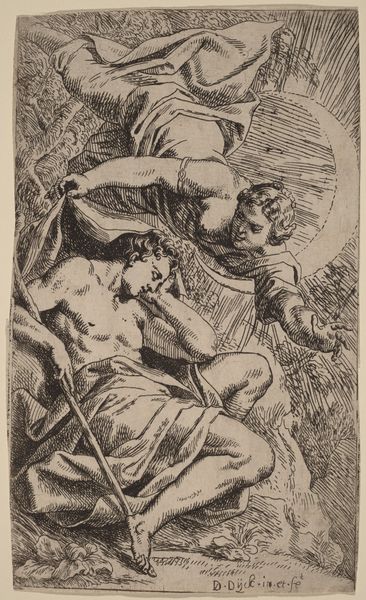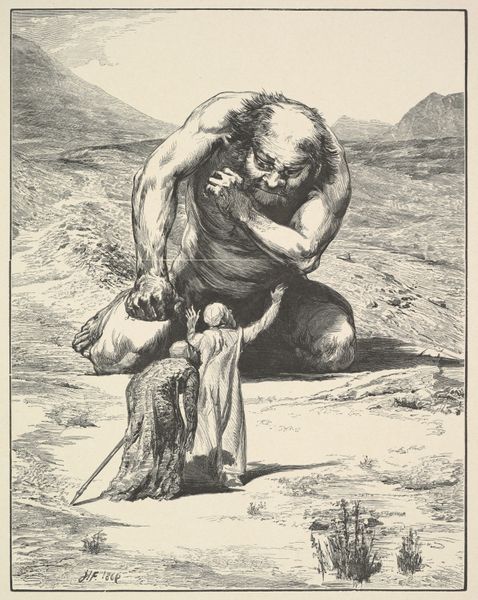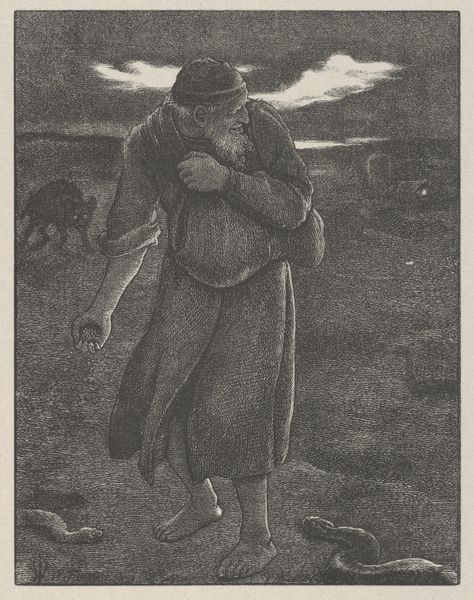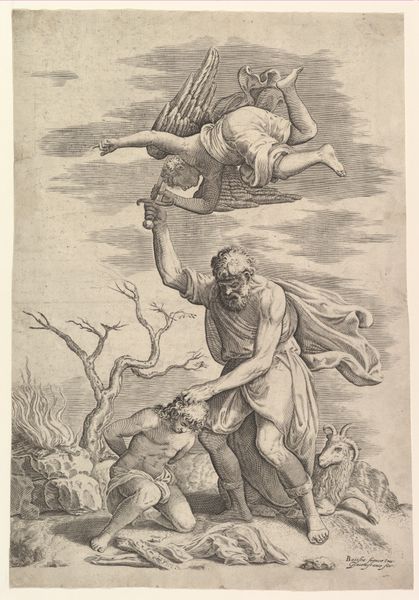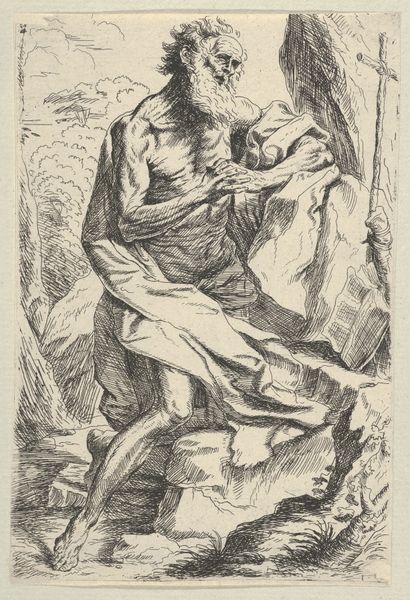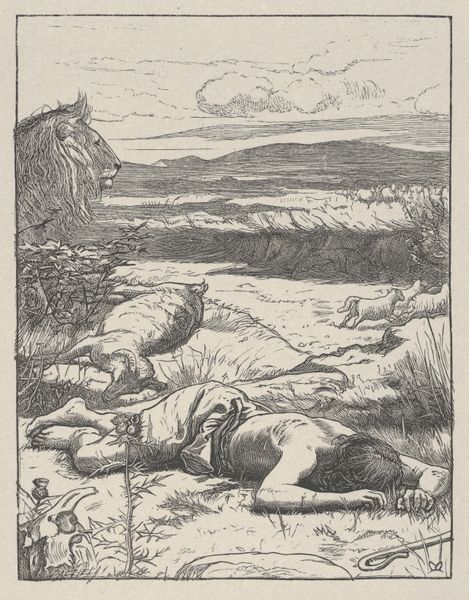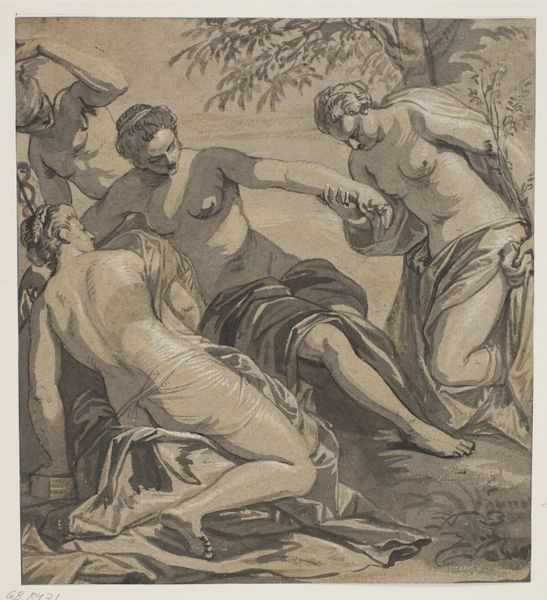
The Good Samaritan (The Parables of Our Lord and Saviour Jesus Christ) 1864
0:00
0:00
drawing, print, engraving
#
drawing
#
narrative-art
# print
#
landscape
#
figuration
#
genre-painting
#
history-painting
#
engraving
#
realism
Dimensions: Image: 5 3/8 × 4 3/16 in. (13.7 × 10.7 cm) Sheet: 7 5/16 × 6 3/16 in. (18.6 × 15.7 cm)
Copyright: Public Domain
Editor: Here we have Sir John Everett Millais' "The Good Samaritan," an engraving from 1864. It's quite striking, with a lot of detail packed into the print. I'm initially drawn to the compassion in the main figure's posture; it’s almost overwhelming. What symbolic elements stand out to you? Curator: The composition immediately presents a powerful emblem of charity and empathy. Note how Millais employs the visual language of the parable. Consider the historical resonance: Millais created this work during a period of significant social reform movements. Does the landscape play a role for you, perhaps? Editor: Absolutely! The landscape, although somewhat desolate, feels like a witness to this act of kindness. The lone figure in the background adds a sense of isolation, amplifying the Samaritan’s compassion. The donkey, too, seems important... Curator: Indeed. The donkey, traditionally a beast of burden, symbolizes assistance and humble service, further enriching the image. Look closely at how Millais renders the figures' expressions. How might the use of light and shadow contribute to our emotional experience of the scene? Editor: The dark engraving really emphasizes the vulnerability of the injured man and contrasts sharply with the Samaritan's dark clothing, making him almost a beacon of hope in this harsh environment. It's very moving. Curator: Exactly! This juxtaposition reinforces the parable’s central message: compassion transcends social and religious boundaries. The Good Samaritan serves as a potent symbol of universal morality, urging viewers to examine their own capacity for empathy. Do you find that its historical context still resonates with contemporary issues? Editor: Definitely! The themes of compassion and social responsibility feel very relevant even today. I appreciate how analyzing the symbols reveals deeper layers of meaning within the work. Curator: Precisely! Understanding these symbols illuminates how artists translate complex narratives into enduring visual experiences, bridging the gap between the historical and the contemporary.
Comments
No comments
Be the first to comment and join the conversation on the ultimate creative platform.
